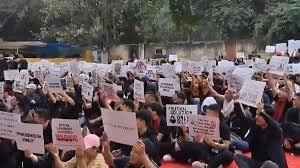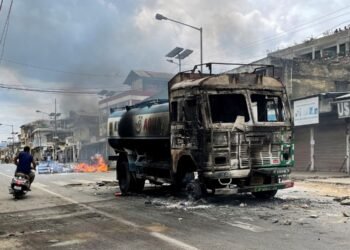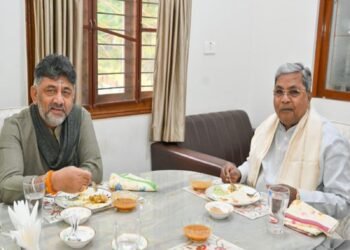The Chinese-sponsored Kyaukphyu Special Economic Zone and deep-sea port are caught in the crossfire as Myanmar’s Arakan Army encircles the area, challenging the junta’s control. Despite the unrest, Chinese and Russian investors continue their collaboration with the regime to advance infrastructure projects pivotal to regional trade and energy.
BY PC Bureau
Despite ongoing unrest and military advances by the ethnic Arakan Army (AA), Myanmar’s military regime is forging ahead with ambitious infrastructure projects supported by China and Russia. Among these are the Chinese-sponsored Kyaukphyu Special Economic Zone (SEZ) and deep-sea port in Rakhine State, which remain heavily guarded by junta forces even as the area is largely surrounded by AA troops.
On January 14, junta Minister of Investment and Foreign Economic Relations Kan Zaw chaired a meeting of Myanmar’s Central Working Group for Special Economic Zones in Naypyitaw. He urged enhanced collaboration between the Kyaukphyu SEZ Consortium Company Ltd., a Myanmar government entity, and China’s CITIC Consortium to expedite development while adhering to regulations.
Leaked footage reveals the horrors of scam syndicates: failure to meet quotas leads to public beatings, and worse—organ harvesting. After crackdowns in northern Myanmar, operations have shifted to Southeast Asia and Dubai, reportedly backed by Belt and Road funding. 🚨💔… pic.twitter.com/D99i4e0gFK
— Spotlight on China (@spotlightoncn) January 13, 2025
Strategic Importance of Kyaukphyu Projects
The Kyaukphyu SEZ and deep-sea port, integral to the $1.3 billion and $7.3 billion projects, respectively, are critical components of the planned 1,700-kilometer China-Myanmar Economic Corridor. This corridor will link Kunming in China’s Yunnan province to the Indian Ocean, with Kyaukphyu serving as the starting point of the China-Myanmar pipeline, which transports natural gas to Yunnan.
The projects span 150 hectares on Maday Island and 96 hectares on Ramree Island in Kyaukphyu District. However, their development faces significant challenges due to the AA’s rapid territorial gains. Since launching an offensive in November 2023, the AA has taken control of 14 out of 17 townships in Rakhine State, including the junta’s Western Command headquarters.
Rising Tensions in Kyaukphyu
While Kyaukphyu town remains under junta control, it is encircled by AA forces. The AA has declared its willingness to support foreign investments that ensure mutual benefits for Rakhine State, pledging to protect existing projects and investor security. In December 2023, the junta and China’s CITIC signed an addendum to the concession agreement for the Kyaukphyu deep-sea port, indicating China’s continued interest in the region despite escalating conflict.
After the AA took over almost all the towns in Rakhine State,around 500 so-called Chinese private security personnel arrived in batches to protect the Chinese Special Economic Zone project in Kyaukphyu, according to @Khithitofficial sources…
(1/2)#WhatsHappeningInMyanmar pic.twitter.com/vdMXd5EB3r— Robert Minn Khant (@minn_robert) December 30, 2024
Local residents report a tense stalemate in Kyaukphyu, with both sides adopting a cautious approach due to China’s substantial investments. “Despite military tensions and occasional skirmishes, the two sides are in a wait-and-see posture because of the extensive Chinese interests,” said one resident.
Russian Energy Projects in Myanmar
Meanwhile, Russia is also deepening its involvement in Myanmar’s infrastructure sector. On January 16, Mandalay Region Chief Minister U Myo Aung met with executives from Russian state-owned energy firm Rosatom and Myanmar’s Zeya & Associates to discuss a 200 MW wind-power project near Mount Popa in Kyaukpadaung Township.
This initiative follows feasibility studies conducted by Rosatom subsidiary NovaWind, Zeya, and other local partners. The project, part of the junta’s efforts to address Myanmar’s worsening electricity crisis, is expected to include eight wind-power developments nationwide, with Rosatom involved in three.
The country’s power generation has fallen by at least a third since the military coup in 2021, leading to frequent blackouts. The junta cites natural gas shortages, damaged power lines, and natural disasters as contributing factors. Average daily electricity demand is 4,400 MW, but only half of that can currently be met.
Economic and Political Implications
Myanmar’s pursuit of infrastructure projects with China and Russia underscores the junta’s reliance on these allies amid international isolation. However, the heavy militarization of project sites, coupled with the volatile political landscape, highlights the significant risks and challenges these developments face.
As the junta continues its push for economic partnerships, the ongoing conflict and resistance from ethnic armed groups like the AA will play a critical role in shaping Myanmar’s future and the viability of these ambitious infrastructure projects.













